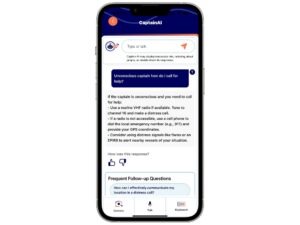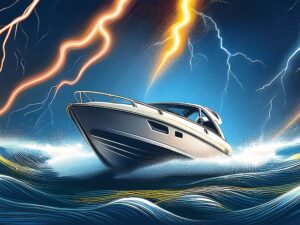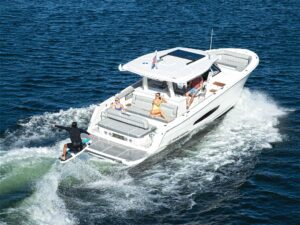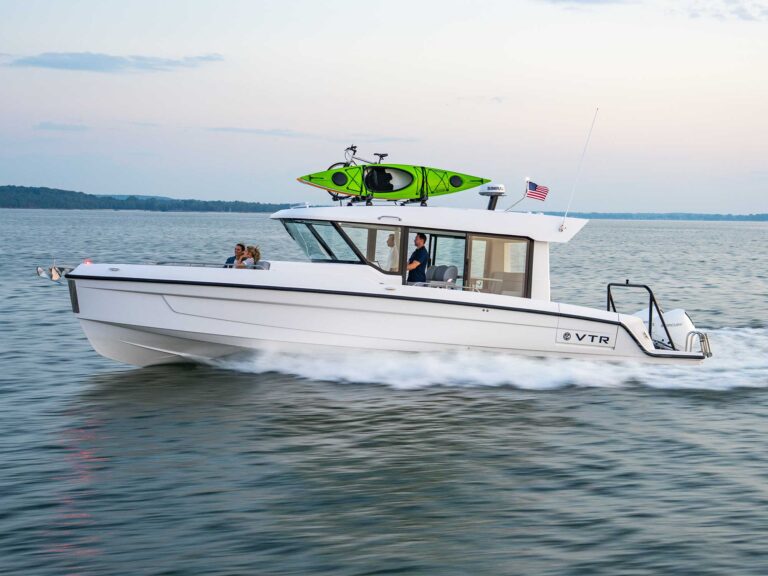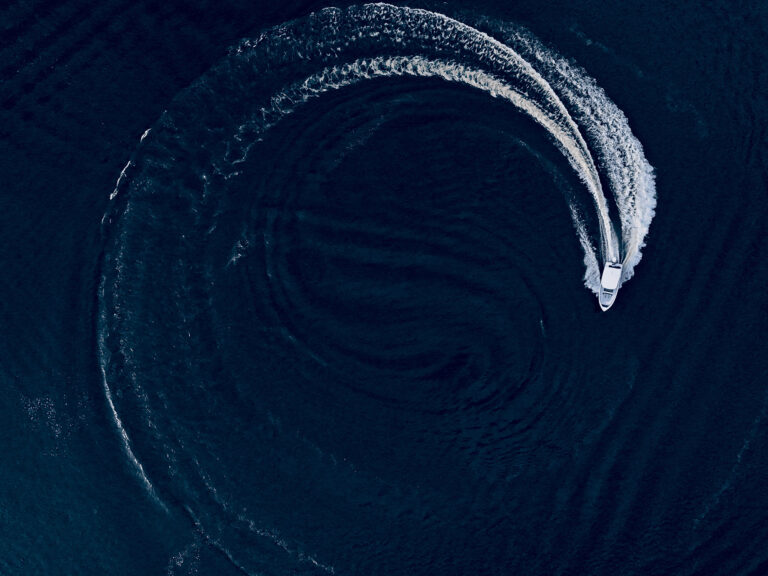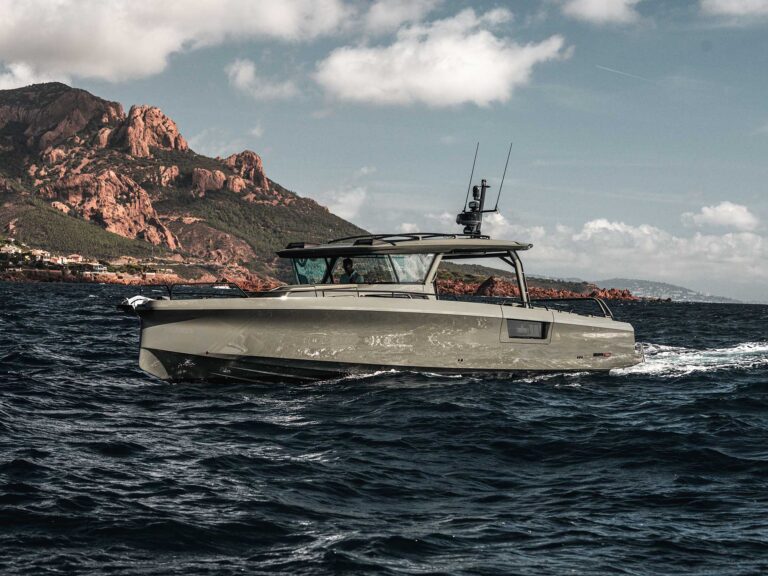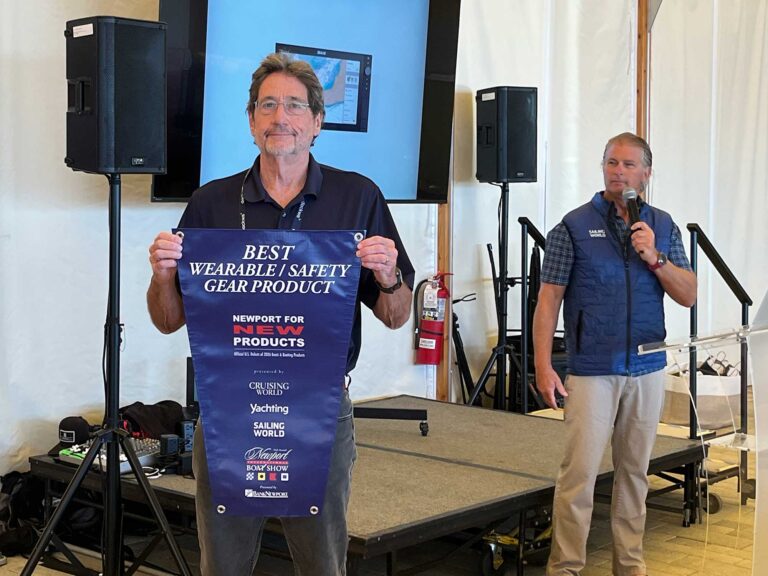
Water skiing’s first ride — and inevitable wipeout — first occurred in 1922. Tow sports have evolved quite a bit since then. First came jumping, then slalom skiing and trick skiing. Barefooting followed in 1947, followed by the radical explosion of wakeboarding in the 1990s. Today, wakesurfing and wakeskating are pushing new boundaries, yet all these sports have a common element: You need a boat to either tow you or create a wake to ride.
In addition, each tow sport requires its own specific wake characteristics. In general, slalom skiers want small wakes, while wakeboard riders and wakesurfers want big ones. But it gets more complicated because each wake sport has its own ideal wake shape and size. This makes creating the ideal boat for each sport a challenging task for the boatbuilders.
Here’s what to look for to get the most out of your chosen tow sport.
Ski Boat
For the water-skier, the ideal wake is small and narrow with minimal propeller turbulence at 75 feet or shorter (for slalom-course skiers) at boat speeds that range from the mid-20s to 36 mph, the maximum boat speed for the slalom event for men. Slalom skiers and jumpers need to slice through the wakes without interruption. To achieve this specific wake shape, the inboard direct drive (with the engine installed amidships) along with low deadrise keep the hull riding higher on the water to create a smaller wake. Boat weight is a big factor in the size of the wake, so competition ski boats typically weigh around 3,000 pounds.
Ski boats today such as the Nautique 200, Malibu Response TXi and MasterCraft ProStar are much bigger than the original Ski Nautique — about 20 feet in length with an 8-foot beam with engine power ranging from 350 to 450 hp. Though the beam of the ski boat has increased throughout the years, the wakes today are smaller, approximately 3 to 4 inches in height. Builders feature pockets in the hull to deflect spray that would otherwise pelt slalom skiers running the course at very short line lengths — two reasons some skiers seek to upgrade otherwise “good” old boats.
But the details go way beyond that. Builders need to factor in the best angle of the propeller shaft to minimize turbulence for the water-skier while still providing optimal boat performance.
Then there’s this: While slalom skiers and jumpers want small wakes, trick skiers want bigger wakes to do rotations and flips by launching from the wake. Trickers also ski at line lengths of about 50 feet at speeds that range from 15 to 20 mph. To accommodate the trickers, the Nautique 200 features a vertical plate (HydroGate) at the transom that moves up or down just slightly below the bottom of the hull. When the plate is down, the Nautique rides higher for small wakes, but when the plate is up, the stern rides deeper to alter the flow of the water to create a bigger wake, approximately 12 to 15 inches in height, for trick skiers. Another impetus for upgrading is revealed.
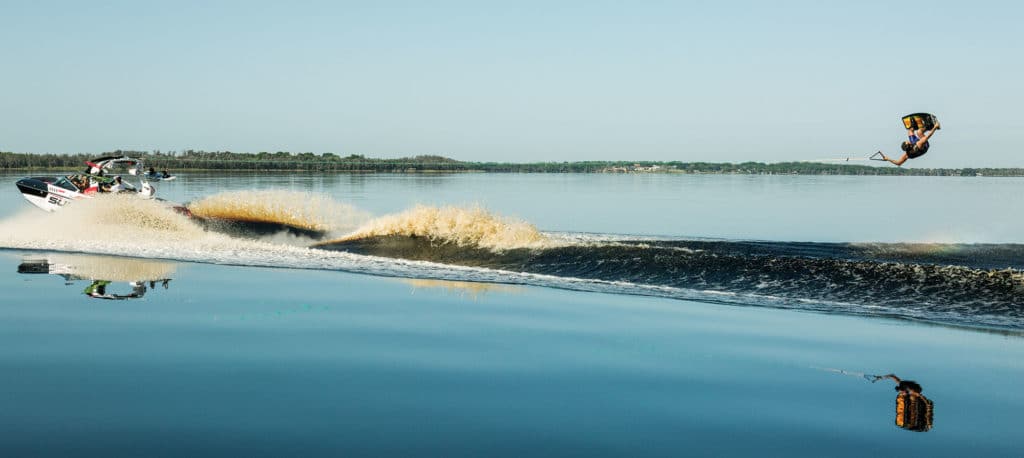
Wakeboard Boat
Elite wakeboarders prefer a gradually upward-sloping and tall wake that has a clean peak at a 75- or 85-foot line length behind the boat. This makes a perfect ramp to get plenty of air time. Boat speeds for wakeboarding range from about 18 to 24 mph.
Wakeboard boats feature a bit more deadrise than ski boats, but adding more weight to the boat really amplifies the wake. Instead of straight inboard drivelines, wakeboats feature a V-drive, with the engine installed aft, distributing weight where its best suited to enhance wakes.

Wakeboats are also typically longer and beamier than ski boats, ranging from 21 to 25 feet in length. Two ideal boats for contest riding are the Malibu Wakesetter 23 LSV and the Supra SA.
Ballast tanks and bladders are also key components. Ballast tanks are positioned on each side of the engine, under the midship storage locker, and even in the bow section under the seating. These tanks quickly fill or drain lake water using electric pumps. Since the tanks in each section are separate, the tanks can be filled to varied levels to customize the wake shape and size for each rider’s skill level.
Boatbuilders further shape the wakes with adjustable horizontal wake plates mounted to the transom. The combination of adjustability of the ballast and the wake plates gives the rider a variety of wake shapes and wake heights from 1 to 3 or more feet.
Malibu gets nifty by creating a bigger wake with its Power Wedge II, a foil-like device attached to the transom that hinges down below the waterline. When in use, the foil pulls down the hull into the water to act like added ballast to create bigger wakes.

Barefoot Boat
For the barefoot skier, the ideal wake features a flat table from crest to crest with minimal propeller turbulence. Competitive footing is done on a 75-foot line with the boat moving anywhere from 35 to 45 mph.
Though the footer wants a flat, nonturbulent wake for starts and for crossing the boat’s wake, the curl of the wake (just outside the base of the wake) is a perfect spot to do tricks. A more defined curl provides about a 3-foot-wide ideal area for tricks such as tumble turns and one-foots. A defined curl also makes for a smoother spot to barefoot when the waters are bumpy from wind. To get these wake characteristics, top barefooters like a boat about 20 feet in length that features added deadrise at the transom. With more V-shape in the hull, the boat rides deeper in the water to create a taller wake. With a taller wake, the propeller turbulence is kept down so the wake is flat yet with a more defined dished-out area for the curl.
Throughout the years, inboard-, outboard- and even sterndrive-powered boats have been used for serious barefooting. All three types of power are ideal for barefooting if the hull has more deadrise at the transom than typical ski boats.
The Sanger DX II, with a direct-drive engine installed amidships, is an ideal setup for competition. The 20-foot-long Sanger DX II features a 16-degree deadrise at the transom. That’s a hull with plenty of V-shape to create a wake for barefooters that is approximately 5 inches in height. To make the table of the wake produced by the Sanger even calmer, the DX II features an adjustable horizontal wake plate at the transom to knock down the prop turbulence.

Wakesurf Boat
Wakesurfers want that big wake too. But the wake for surfing needs its own shape. The ideal wake for wakesurfing is long and tall with a clean peak that resembles an ocean wave. For the wakesurfer, the action is done about 5 to 30 feet aft of the swim platform at about a 10 mph boat speed.
Like wakeboard boats, surfboats feature ballast throughout the hull to create and adjust wake height and shape. But to further shape the wake for surfing, boat manufacturers are adding features to the transom to direct the flow of water to shape the wake into a wave.
For competitive surfing, a boat about 23 feet in length such as the MasterCraft X23 has been the choice for serious surfers.
At the World Wakesurfing Championship in Fort Lauderdale, Florida, in September 2016, competitors rode behind the Centurion Ri237 featuring a 23-foot-7-inch length and an 8-foot-6-inch beam. With an 11-degree deadrise at the transom, the Centurion Ri237 features a bit more V-shape than other boats used for surfing. In addition to more V-shape in the hull, the Centurion Ri237 has a 5,450-pound boat weight and a 5,100-pound ballast capacity that all works together to create a formidable surfing wave.

To further transform a big wake into a ridable wave, boat manufacturers add features to the transom. Boatbuilders such as Centurion, Malibu, Supra, Tigé and Moomba create the perfect wave by adding adjustable plates to the transom. Activate the plate downward on one side of the boat and the opposite side of the wake turns into a taller wave. Unlike traditional trim tabs, these adjustable plates push the water down and to the side of the boat, which is what changes the wake on the opposite side into a supremely surfable wave.
Malibu and Nautique each create the wave in a different way. Malibu features paddlelike devices in its Surf Gate System that are placed on both sides of the transom near each gunwale. The device, when adjusted outward, extends outward past the width of the boat. When the Surf Gate is adjusted outward on one side, the water flow is pushed out past the hull to create the wave on the opposite side of the boat. Nautique’s design, on the other hand, pushes water to the side and downward to create its surf wave.
These systems can all be adjusted to customize the wave’s height, length and shape, from a short-in-length wave that is tall (about 3 or more feet) to a longer wave that is not so tall (approximately 1 foot in height), and to also adjust the wave from one side to the other, allowing the surfer to transfer to either side without stopping the boat.
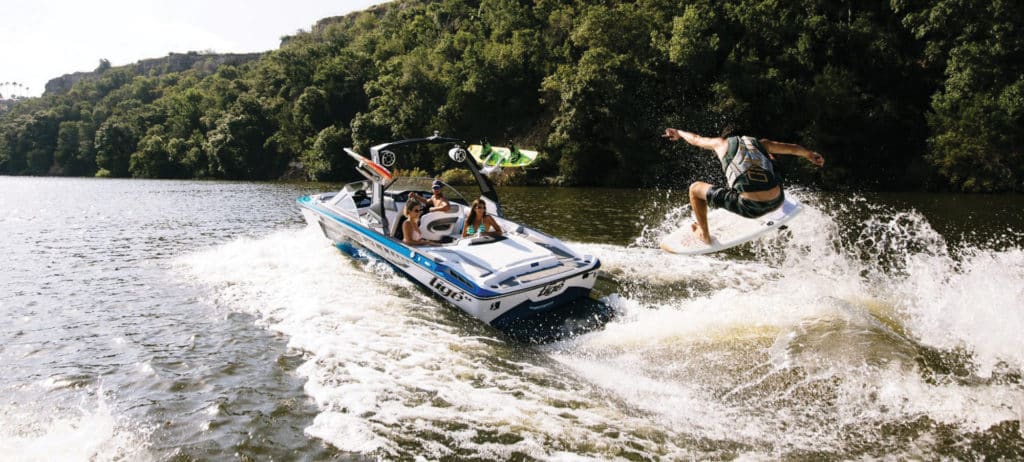
Crossover Boat
So, is there a boat for someone who doesn’t just want a hardcore craft for one specific sport? Yes, there is: the crossover boat. These are another big reason that some enthusiasts trade in their old but good tow boats for a new, or newer, one.

A few builders make crossover boats that let you ride, surf and ski, such as the Malibu 20 VTX, Nautique G20, Supra SR and the Tigé RZR. These boats typically use a V-drive engine, but the shorter and lighter size along with empty ballast tanks keep the wake smaller for recreational slalom skiing. Want to surf too? Filling the ballast or activating the surf features on the transom lets you switch quickly to wakeboarding and surfing. If you don’t want to surf, you can even go outboard. Check out the MasterCraft Global, a 20-foot outboard-powered boat that features smaller wakes ideal for recreational slalom skiing and barefooting.

